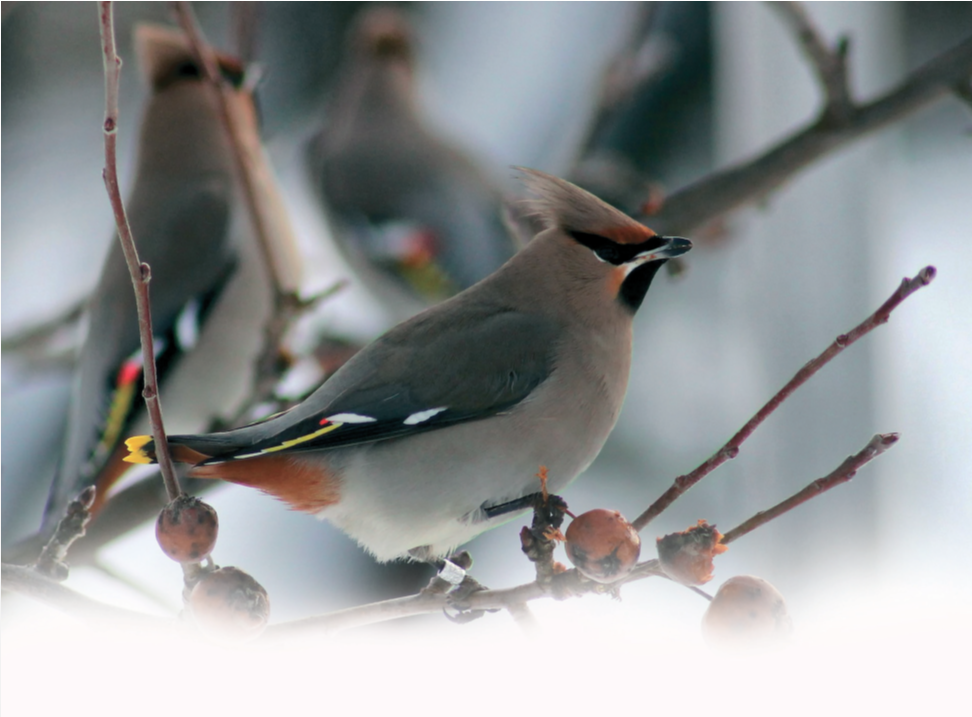
If ever a bird got even non-birdwatchers interested then it is the Waxwing. Starling-sized and silky feathered, it is a fruit of harsher winters further north.
Also called the Bohemian Waxwing, this strikingly beautiful and often tame species is pinkish brown with orange tinges around the face.
It has a distinctive shaggy crest, black mask and bib, a grey rump and a reddish-brown vent. The tail tip looks like it has been dipped first in black paint and then again in yellow.
At rest the adults display yellow markings along the tips of the outer wing feathers. And half way up the wing, in adults, is the distinctive red blob giving the bird its name. Ancient letters were, of course, sealed with wax of the same colour.
In Lapland, nearly 150 miles north of the Arctic Circle and far beyond the Santa Claus Village HQ, I’ve seen them flying low to gorge on summer insects. In winter they change diet and if you have any berries left in your garden then keep a lookout.
They were first seen a few weeks ago in Scotland and as I write some have got to Norfolk and Essex. But will they turn up for the New Year’s party down here? Or even later in the month?
If they make it to Cranleigh then there will be a flock of other visitors too. The last time they arrived in the village, two years ago, they attracted photographers to the High Street from miles away.
Up to 13 birds then put on a great show from early January to the month’s end when the food ran out and they departed. In 2011 there were over 30. But you can’t take them for granted. A ‘Waxwing winter’ is a rarity and from 1966-1995 there were no Cranleigh records at all.
One year I could wait no longer and went to see some in Woking. Suspicious neighbours alerted the police when they saw us all apparently looking through people’s windows. But the coppers were soon looking through our telescopes too – enjoying the trilling Bohemian rhapsody.











